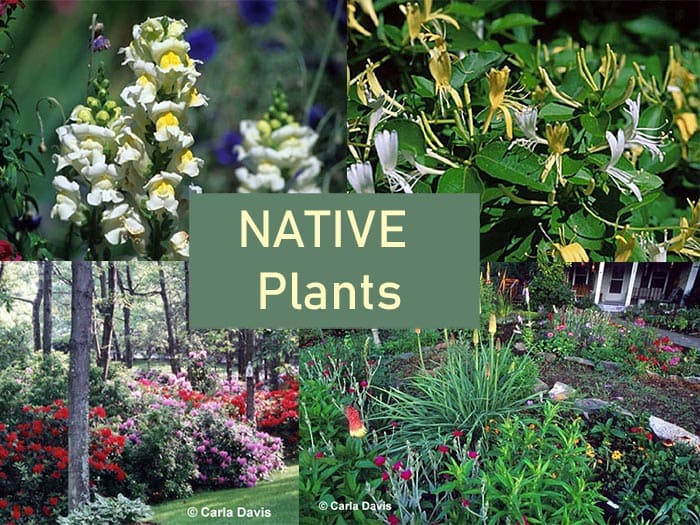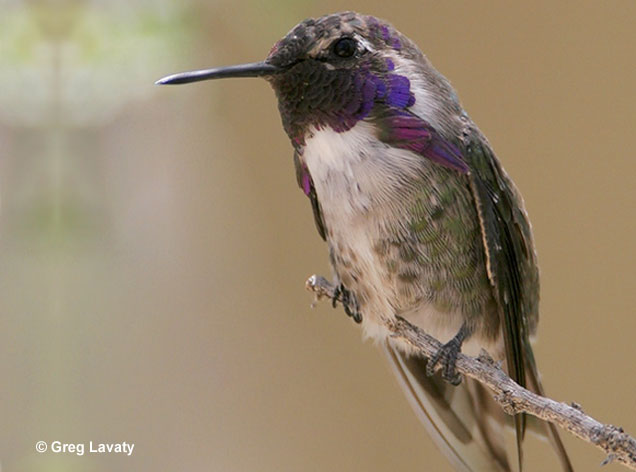
Oklahoma Plants for Wildlife Habitat & Conservation Landscaping
WindStar Wildlife Institute has these plant recommendations for wildlife habitats in Oklahoma:
Trees
Box Elder; Pecan; Shagbark, Black and Mockernut Hickory; Hackberry; Redbud; Parsley Hawthorn; Persimmon; White and Green Ash; Possum Haw; Texas, Black, River and Little Walnut; Ashe, red-berry and Rocky Mountain Juniper; Eastern Red Cedar; Sweet Gum; Black Gum; Pinyon, Loblolly and Ponderosa Pine; Quaking Aspen; Chickasaw and Mexican Plum; Black Cherry; Southern Red, Gambel’s, Overcup, Bur, Blackjack, Chinkapin, Willow, Shumard, Post and Live Oak; Carolina Buckthorn
Shrubs
White-ball Acacia; Four-wing Saltbush; Chittamwood; Mountain Mahogany; Rabbit Brush; Rough-leaf Dogwood; Feather Plume; Black Dalea; Winterfat; Swamp Privet; Desert Olive; One-seed Juniper; Winterberry; Yaupon; Sweetspire; Pink Mimosa; Honey Mesquite; Chokecherry; Smooth, Prairie Flameleaf and Desert Sumac; Buffalo Currant; Prairie, Carolina and Illinois Rose; Dwarf Palmetto; Eve’s Necklace; Coralberry; Sparkleberry; Black Haw
Flowers
Sand Verbena; Prairie Dandelion; Prairie Onion; Thimbleweed; Pussytoes; Spreading Dogbane; White Prickly Poppy; Jack-in-the-pulpit; Prairie Sage; Antelope Horns; Swamp and Showy Milkweed; Butterflyweed; Heath and Sky Blue Aster; Milk Vetch; Square-bud Primrose; Indian Paintbrush; Basket Flower; Rocky Mountain Beeplant; Lance-leaved and Plains Coreopsis; Blue and Prairie Larkspur; Purple Coneflower; Engelmann Daisy; Prairie Fleabane; Rattlesnake Master; Joe-pye Weed; Flowering Spurge; Texas Bluebell; Indian Blanket; Bluets; Northern Sweetvetch; Common, Maximilian, Plains and Ox-eye Sunflower; Southern Blue Flag; Gayfeather; Blazing Star; Blue and Yellow Flax; Sand, Red, Fendler and Whorled Penstemon; White and Purple Prairie Clover; Prairie Coneflower; Black-eyed Susan; Prairie Verbena

Hummingbirds are very common type of bird that you can see in Oklahoma.
Vines
Trumpet Creeper; American Bittersweet; Leather Flower; Purple Clematis; Woodbine; Arizona, Riverbank, Muscadine Grape and Canyon Grape; Kentucky Wisteria
Cactus
Tree Cholla; Common Prickly Pear; Yucca
Grasses
Western Wheatgrass; Ticklegrass; Big, Splitbeard, Bushy, Little and Sand Bluestem; Sideoats, Black, Blue and Hairy Grama; Buffalograss; Canada Wild Rye; Plains Love Grass; Tobosa; Junegrass; Bush Muhly; Vine Mesquite; Switchgrass; Indiangrass; Tall and Sand Dropseed; Eastern Gamagrass
Oklahoma is a land of flat, fertile plains and low hills. Oklahoma’s plains also host large herds of cattle and vast wheat fields. The geographical landscape of Oklahoma is comprised of 10 separate land regions. The Ozark Plateau is marked by rivers with steep valley walls separated by broad flat areas. The Prairie Plains produces most of the state’s coal and a great deal of oil. The Ouachita Mountains are sandstone ridges, running east to west, to form the roughest land in Oklahoma. Spring-fed streams run through narrow valleys between the ridges. The Sandstone Hills Region are from 250 to 400 feet high. Some are covered with Blackjack and Post Oak forests. The Arbuckle Mountains comprise an area of about 1,000 square miles in south-central Oklahoma. The low mountains rise about 600 to 700 feet above the plains. The Wichita Mountains are found in southwestern Oklahoma. The Red River Valley Region in southern Oklahoma is characterized by rolling prairie. Some forested hills can also be found in the area. To the west are the Red Beds Plains which is the largest land region in Oklahoma. The Gypsum Hills are low (150 to 200 feet) hills capped with 15 to 20 foot layers of gypsum which sparkle in the sunlight because of their gypsum content and, because of this, are sometimes called the Glass Hills. The High Plains are level grasslands. The Oklahoma Native Plant Society can provide lists of plants for a specific region.
For more information on improving your wildlife habitat, visit the WindStar Wildlife Institute web site. On the web site, you can also apply to certify your property as a wildlife habitat, register for the “Certified Wildlife Habitat Naturalist e-Learning course, become a member and sign up for the FREE WindStar Wildlife Garden Weekly e-mail newsletter.

